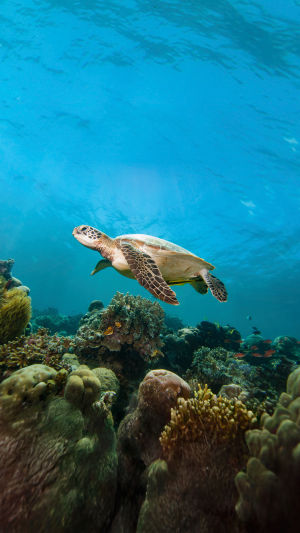Have you ever spotted a sea turtle gliding effortlessly through the ocean? These incredible creatures have a lot more going on than meets the eye.
Today, we’re going to explore how they live, what makes them special, and why they've been thriving in our oceans for millions of years. Let’s dive in together!
<h3>Unique Body Shape Built for the Sea</h3>
Sea turtles have a long, flat body that makes them perfect swimmers. They usually grow between 0.75 to 2 meters in length and can weigh anywhere from 100 to over 2,000 pounds. Their flipper-like limbs are shaped like paddles, helping them move gracefully underwater. Unlike other turtles, they can’t pull their head or legs into their shell, but their solid, armor-like back and belly give them strong protection.
They come in shades of brown or dark green, often with yellow spots on their shell. Their ears are hidden under skin behind their eyes—an adaptation that helps them stay streamlined and avoid water getting in. Isn't it fascinating how well they’ve adapted to ocean life?
<h3>Spotting the Difference Between Males and Females</h3>
Before they reach adulthood, male and female sea turtles look pretty much the same. Once they mature, though, males grow longer tails—sometimes up to half the length of their body! Interestingly, different species mature at different ages. For example, hawksbill turtles can mature as early as 3 years old, while green turtles may not mature until they’re 20 to 50 years old.
<h3>Where Do Sea Turtles Call Home?</h3>
We can often find sea turtles in warm, shallow coastal areas, bays, coral reefs, and river mouths. They love warm water and tend to migrate to warmer places when ocean temperatures drop. Some even slow down their metabolism and “hibernate” in deeper waters. Except for females who come ashore to lay eggs, sea turtles spend almost their entire lives in the ocean.
Though they can dive hundreds of meters deep, they mostly swim near the surface and rest in shallow coral areas or rocky reefs. It’s like their version of a cozy bed!
<h3>Chill Lifestyle with a Sharp Beak</h3>
Sea turtles are usually calm and avoid fights. When they sense danger, they rely on their tough shells instead of attacking. They’ve lived peacefully on Earth for over 200 million years! Though they don’t have teeth, their beak is sharp enough to rip through tough food, and their throat has little spikes to help with digestion.
Some, like the leatherback turtle, can swim surprisingly fast—up to 15 mph, similar to a dolphin. Green turtles even visit natural "cleaning stations" where small fish nibble algae off their shells. It's like their version of a spa day!
<h3>What’s on the Menu?</h3>
Sea turtles eat a variety of foods depending on their species. Green turtles are meat-eaters when young but switch to seagrass and seaweed as adults. Hawksbills enjoy sponges hidden in coral, while leatherbacks love jellyfish. They also snack on sea urchins, clams, and fish. We can say their menu is as diverse as their habitats.
<h3>Breathe Like a Pro</h3>
Even though sea turtles live in the ocean, they still need air to breathe. They come up to the surface to take a breath but can hold it for hours while resting. They breathe with lungs, but their chest doesn’t move like ours. Instead, they rely on throat muscles to draw in air. When underwater for a long time, they can even absorb some oxygen through special blood vessels near their tail opening.
<h3>Where in the World Are They?</h3>
Sea turtles are found in the Pacific, Atlantic, and Indian Oceans. In Latin America and the Caribbean, six types of sea turtles live, with nesting sites spread across many coastal areas. Mexico is a key spot for certain species, like the Atlantic ridley and hawksbill turtles. The largest leatherback nesting sites are found in places like French Guiana and Suriname. Meanwhile, many green and loggerhead turtles travel long distances between places like the southeastern U.S. and Japan.
<h3>Time to Reflect!</h3>
Isn’t it amazing how sea turtles have adapted so perfectly to life in the sea? From their paddle-like limbs to their hidden ears and armored shells, everything about them is designed for survival. As we learn more about these ocean explorers, we’re also reminded how important it is to protect their habitats.
Let’s keep exploring the wonders of nature together. Lykkers, have you ever seen a sea turtle in the wild? Share your stories or dream spots with us—we’d love to hear them!
All About Sea Turtles
Video by WWF Wild Classroom





